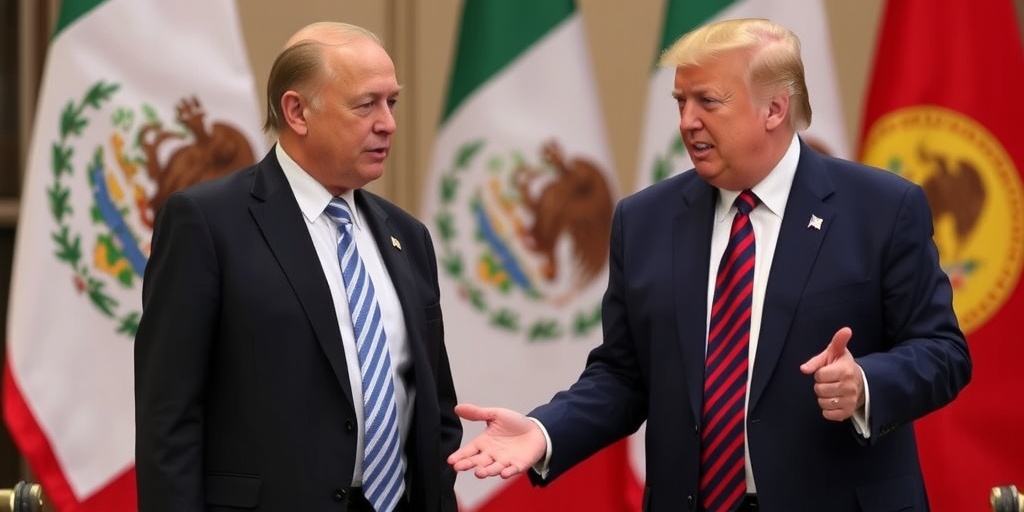Now Reading: U.S. Apparel Manufacturers Struggle Amid Unstable Tariff Policies
-
01
U.S. Apparel Manufacturers Struggle Amid Unstable Tariff Policies
U.S. Apparel Manufacturers Struggle Amid Unstable Tariff Policies

Title: U.S. Apparel Industry Faces Challenges Amidst New Tariffs
On the vibrant 15th floor of a Midtown Manhattan loft building, a skilled team of a dozen workers diligently stitches together various pants, creating fashion pieces for Outlier, a brand known for its innovative and experimental clothing. The company operates within the rich ecosystem of New York’s garment district, where contract manufacturers thrive on producing small, specialized runs. However, the recent imposition of tariffs on imported goods from foreign nations adds a layer of complexity to their operations.
While one would expect such tariffs to favor American manufacturers and encourage domestic production, the reality is nuanced. Outlier’s storeroom reveals a varied selection of fabrics sourced from Italy, Switzerland, Thailand, and New Zealand—countries renowned for specialties in textile production. For instance, the linen variety they use is derived from flax grown in an expansive coastal region that spans northern France to the Netherlands, something that could take a decade to replicate in the U.S., according to Tyler Clemens, Outlier’s co-founder.
Recently, Clemens received a bill from the Department of Homeland Security, which included a charge categorically labeled “IEEPA-RECIPROCAL,” representing the tariffs justified under the International Emergency Economic Powers Act, leveraged during President Trump’s administration.
These new tariffs threaten to increase the costs of Outlier’s American-made garments, albeit not as drastically as on their larger imports from Portugal. Higher prices could lead to a drop in orders, especially amid a climate where consumers are feeling the pinch from rising prices on essential goods. The company is now facing a hiring freeze as uncertainty looms over the economic future.
Finding a path toward increased domestic production is fraught with challenges. Most workers capable of handling the intricate tasks of sewing learned their trades in garment factories overseas in locations such as China and Central America. Transitioning to a more American-centric model would involve extensive retraining, as well as significant investments in machinery to automate cutting fabric, an undertaking that necessitates the reassurance of long-term tariff stability.
Abe Burmeister, another co-founder of Outlier, expressed concerns about the unpredictable nature of current tariffs. “If we know these tariffs are locked in, it’s going to suck, and it’s going to make everything more expensive, but we can deal with it on a certain level,” he remarked. However, the continuous uncertainty hinders effective business planning.
Clemens and Burmeister’s skepticism about the tariff policies snaps into focus as disruptions occur in real-time. Just days after voicing concern, President Trump announced a pause on reciprocal tariffs, creating confusion among manufacturers about the stability of their supply chains. Moreover, a remaining 10 percent universal tariff will maintain higher prices on imported garments, doing little to assist the small American manufacturing sector.
Historically, the U.S. clothing industry exemplified a thriving domestic production model. However, it now faces a stark reality where only 2 percent of apparel purchased by Americans is cut and sewn within the country. Approximately half of this domestic production is dedicated to military contracts, ensuring adherence to federal manufacturing requirements. The decline of the industry is alarming; according to the Bureau of Labor Statistics, employment in apparel manufacturing has fallen from 938,000 in 1990 to just 84,000 today.
Tariffs averaging 12.6 percent only add to the problems consumers face as they navigate clothing budgets amidst economic concerns. Many American manufacturers have developed niche markets, focusing on high-value products that catered to consumers willing to pay top dollar. Companies like Hamilton Shirts, which produces premium men’s wear using Italian textiles, are examples of this shift, with prices starting at $245 per dress shirt.
In tandem with raising prices, some U.S. manufacturers have explored strategies to remain viable. For instance, David Hamilton of Hamilton Shirts emphasizes the challenges posed by international competitors who can exploit the lower labor costs abroad. He advocates for minimum wage protections in apparel firms akin to those afforded to auto workers in North America.
Another entrepreneur, Todd Shelton, proposed that tariffs on imported clothing be redirected to subsidize U.S. apparel workers, suggesting an $8 hourly wage subsidy to enhance domestic production viability. Regrettably, manufacturers continue to face hurdles, including restrictions on the range of products they can feasibly produce domestically.
Companies like Karen Kane, known for women’s clothing, highlight the difficulty in producing specialized items domestically due to a lack of suitable factories, especially for complex designs and embroideries. “We would love to make more here in the U.S.,” stated president Michael Kane, “but the challenge is finding a way to make it economically viable.”
Even brands that do manage to source materials domestically express reservations about the efficacy of tariffs. Bayard Winthrop of American Giant, a company producing T-shirts entirely sourced and manufactured in North Carolina, believes that a stable tariff environment could encourage investment, but lamented the current chaotic approach.
New producers like Joseph Ferrara are optimistic, having invested substantially in their production facilities while hoping for a consistent tariff environment to capitalize on increased domestic production opportunities.
In conclusion, the U.S. apparel industry sits at a precarious crossroads, grappling with the complexities introduced by tariffs while trying to respond to shifting consumer behavior and economic uncertainties. As the industry figures out how to navigate these challenges, the future of American-made garments hangs in the balance.
Stay Informed With the Latest & Most Important News
Previous Post
Next Post
-
 01New technology breakthrough has everyone talking right now
01New technology breakthrough has everyone talking right now -
 02Unbelievable life hack everyone needs to try today
02Unbelievable life hack everyone needs to try today -
 03Fascinating discovery found buried deep beneath the ocean
03Fascinating discovery found buried deep beneath the ocean -
 04Man invents genius device that solves everyday problems
04Man invents genius device that solves everyday problems -
 05Shocking discovery that changes what we know forever
05Shocking discovery that changes what we know forever -
 06Internet goes wild over celebrity’s unexpected fashion choice
06Internet goes wild over celebrity’s unexpected fashion choice -
 07Rare animal sighting stuns scientists and wildlife lovers
07Rare animal sighting stuns scientists and wildlife lovers





















